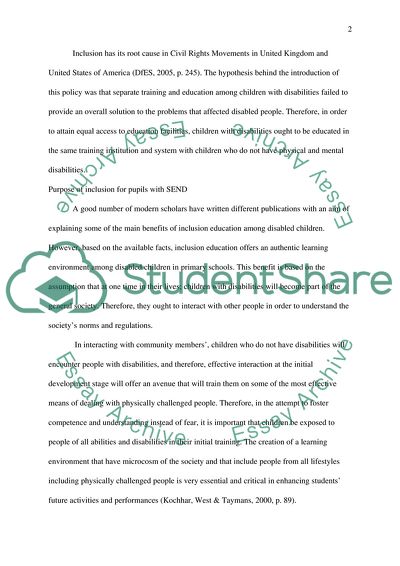Cite this document
(Special Educational Needs Policy and Practice Report Example | Topics and Well Written Essays - 2250 words - 1, n.d.)
Special Educational Needs Policy and Practice Report Example | Topics and Well Written Essays - 2250 words - 1. https://studentshare.org/education/1798946-an-audit-of-current-provision-and-critical-reflection-of-the-learning-environment-where-intervention-groups-are-currently-conducted
Special Educational Needs Policy and Practice Report Example | Topics and Well Written Essays - 2250 words - 1. https://studentshare.org/education/1798946-an-audit-of-current-provision-and-critical-reflection-of-the-learning-environment-where-intervention-groups-are-currently-conducted
(Special Educational Needs Policy and Practice Report Example | Topics and Well Written Essays - 2250 Words - 1)
Special Educational Needs Policy and Practice Report Example | Topics and Well Written Essays - 2250 Words - 1. https://studentshare.org/education/1798946-an-audit-of-current-provision-and-critical-reflection-of-the-learning-environment-where-intervention-groups-are-currently-conducted.
Special Educational Needs Policy and Practice Report Example | Topics and Well Written Essays - 2250 Words - 1. https://studentshare.org/education/1798946-an-audit-of-current-provision-and-critical-reflection-of-the-learning-environment-where-intervention-groups-are-currently-conducted.
“Special Educational Needs Policy and Practice Report Example | Topics and Well Written Essays - 2250 Words - 1”. https://studentshare.org/education/1798946-an-audit-of-current-provision-and-critical-reflection-of-the-learning-environment-where-intervention-groups-are-currently-conducted.


